It wasn’t that long ago that GoPro ruled the action camera roost, with many other companies trying to grab a piece of that pie. The likes of Yi, and even Sony, built some highly compelling cameras. But Yi has fallen back to manufacturing home security cameras, and while Sony still makes an action camera, it hasn’t been updated in several years.
However, times have changed and new challengers have stepped up. Over the past few years, competition has heated up, with both Insta360 and DJI going head-to-head with GoPro. It’s resulted in 2022 quietly becoming the year of action cameras, and it’s been a total blast.
GoPro has mastered its camera housing
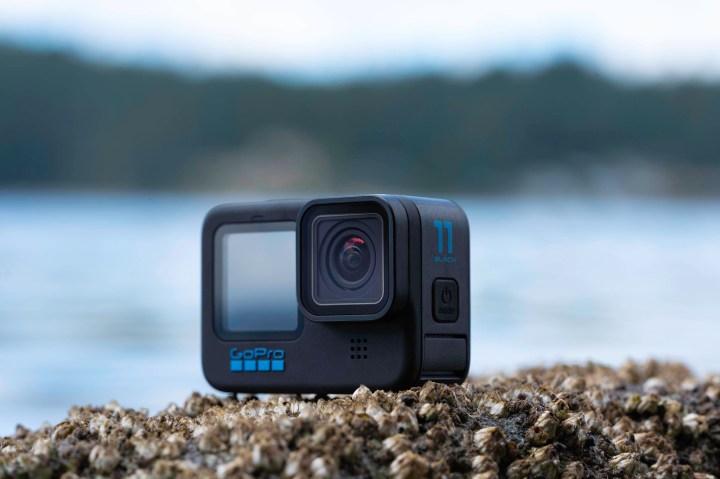
The GoPro Hero 11 Black is a powerful camera that brings some exciting new features to the table. The most significant of these is its taller sensor, which allows for 8:7 video capture, resulting in videos that can be cropped down to either widescreen or vertical formats without a loss of quality. That also means you get a bit of wiggle room in postprocessing — allowing you to adjust the angle of the camera. My personal favorite new feature of the Hero 11 has to be its new star trails time lapse capability, which renders shockingly great astrophotography results.
Over the last few years, GoPro has mastered the art of evolving its cameras year after year with meaningful upgrades. It’s done this by creating what is very close to the perfect exterior housing, allowing GoPro to focus its efforts on maximizing the performance of sensors, processing hardware, and software upgrades.
Customers can now buy GoPro’s excellent accessories, such as the Media Mod and Volta battery grip for one camera, and reasonably expect future compatibility with upcoming camera generations. Add on top of that the impressive value of GoPro’s subscription service, and you have not just a great camera, but an ecosystem that videographers can trust and rely on.
GoPro has also recently added more specialized cameras, such as the Hero 10 Black Bones designed for use on first-person view (FPV) drones, as well as the shrunk-down Hero 11 Black Mini. I find this trend of altering the main camera lineup for more specialized uses to be a brilliant move, and I’m excited to see where this strategy might take GoPro going forward.
DJI surprised me (in a great way)

When DJI launched the original Osmo Action camera, it stacked up well with the contemporary GoPro Hero of the time, but it didn’t really offer anything that was new and different. The follow-up Action 2 dropped the Osmo branding, and with it, the typical action camera design. It became modular, with a magnetic clip system that allowed you to rapidly hot-swap between battery modules. The core camera module could also be used on its own, and as such, was one of the smallest cameras you could buy.
The Action 2 was genuinely exciting and innovative, which is why it surprised me when DJI made the decision to take a step back with the Osmo Action 3. This camera is remarkably similar to the original Osmo Action, but with the imaging upgrades of the Action 2, as well as a magnetic clip system similar to that of the middle child of this action camera family.
Where the Osmo Action 3 really excels is in terms of how deep it can dive underwater, and how, overall, it seems to be the most ruggedly built of any action camera. The magnetic clip system also makes it potentially faster and easier to swap between multiple magnetic mounts, which would be advantageous for skiing or snowboarding.
Insta360 is modular done right
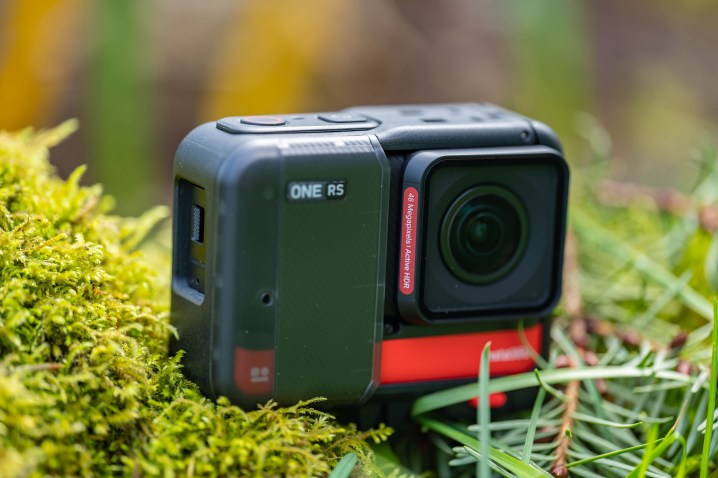
Though it’s best known for its excellent 360 cameras, Insta360 also makes some of the most innovative action cameras out there. The RS system offers the capability to swap between traditional action camera modules and 360 camera modules for capturing immersive virtual reality photos and videos. It’s great because you can pick up the RS system with the 4K boost module at a highly affordable price to use as an action camera, and then later add on a 360 module to try the new field of 360 photography out without having to invest in a dedicated system.
On top of the basic RS system modules, Insta360 offers high-end versions with larger sensors. I’m a big fan of the RS 1-inch 360 edition, which delivers extremely high-quality 360 photos and video capture.
Insta360 also offers the Go 2, which is the smallest action camera ever made, yet retains excellent image quality and features comparable to the much larger 4K boost module of the RS system. This makes it highly versatile and capable of filming in ways and places that would be impossible with a larger camera. It’s also worth noting that the Insta360 X3 360 camera can function as a fully capable action camera when switched into single lens mode.
What’s next for action cameras?
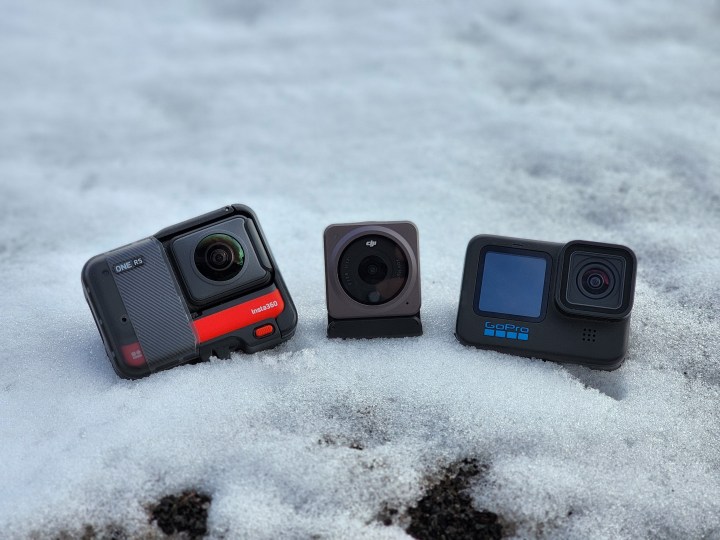
Adding new features and capabilities to action cameras isn’t as easy as you might think. There are features people have come to expect, and a highly established ecosystem of accessories that these devices need to accommodate. However, innovation is key in any market, with highly competitive players constantly working to undercut each other.
With that in mind, I would like to suggest key areas which GoPro, DJI, and Insta360 could focus on to help themselves stand out from the crowd. Note that what follows is pure speculation on my part.
GoPro should expand its camera and accessories lineup
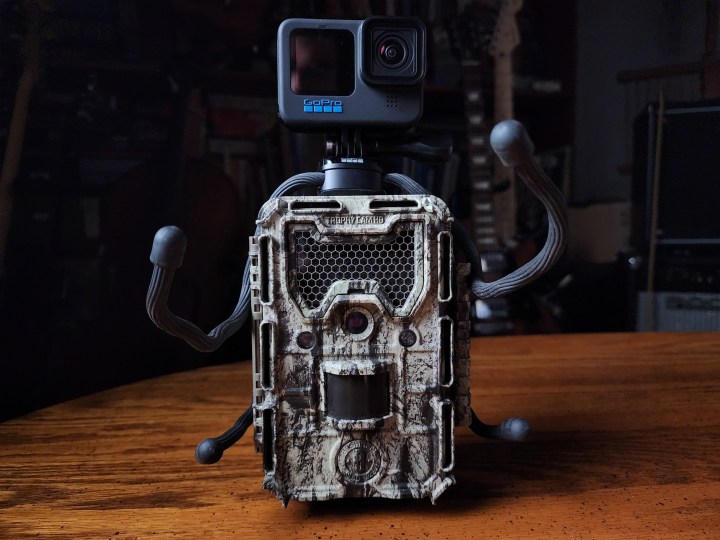
I want to see GoPro expand both upon its available cameras and accessories while maintaining a consistent design and a focus on cross-generation compatibility. How awesome would a GoPro be that could see in the dark? I’m imagining the “GoPro Hero Nighthawk,” which would combine all the awesome features of a standard Hero 11, but add infrared night vision. This could be sold with a housing featuring a large array of infrared LED lights.
This imagined Hero 11 Nighthawk could enable GoPro to completely dominate a potentially huge photography market that’s currently largely untapped by big camera brands: wildlife trail cameras. Currently, all-in-one trail cameras offer fairly mediocre image quality, and GoPro could change that by combining the hypothetical Hero Nighthawk with a housing featuring infrared lights and a motion sensor.
Other features of this trail camera GoPro accessory could include a battery bank to supplement the onboard camera battery, and maybe a Wi-Fi signal booster to enable the camera to easily connect to the internet. Even better would be 5G cellular connectivity so that the camera could upload directly to the cloud on its own without a Wi-Fi connection. This capability is already present in some trail camera systems. The housing could also include twisty arms like the GoPro flexible Gumby camera mount, only be large enough to wrap around trees.
I also think it would be a good idea for GoPro to release a new version of the Media Mod. I’ve used this to record a number of videos, and it’s a very convenient tool for on-the-go filmmaking. It would be great to see a new model with upgraded audio capture capability.
How about a pro-grade cinematography from DJI?
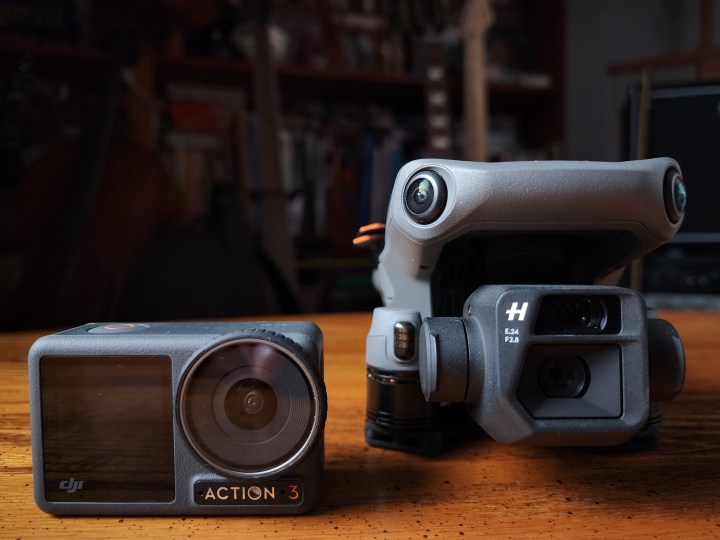
Thanks to its strong partnership with Hasselblad, DJI is uniquely positioned to expand its range of action cameras into the extreme high end of the action camera market. The DJI Mavic 3 rules the skies with its incredible Hasselblad camera and its huge Micro 4/3 sensor. It’s capable of absolutely incredible image quality that rivals pro-grade DSLRs. It’s packed into a shockingly tiny camera module on a gimbal beneath the drone that even includes a whole extra camera with an incredible 7x optical zoom lens.
Imagine if DJI were to take that camera module (probably without the extra 7x zoom camera) and build it into a rugged housing like the Osmo Action 3. It would probably need to be a bit larger and heavier, but the imaging upgrade it would provide would easily compensate for the size and weight trade-off. The price would likely be more than three times that of the Action 3, but there are certainly filmmakers who would be happy to pay for a truly pro-grade action camera.
I’ll call this camera the “Osmo Action Pro,” and I believe such a system would be very popular with scuba divers as a high-quality, compact alternative to bulky DSLRs in underwater housings. Considering the cost of a decent scuba photography rig, if the Osmo Action Pro came in at around a $1,000 price point, it would be a bargain compared to potential alternatives. If DJI were to also sell high-powered underwater video lights that would attach via a magnetic clip system like the Action 3 uses, this device could become a staple of underwater photography.
Let’s see some evolutionary upgrades for Insta360
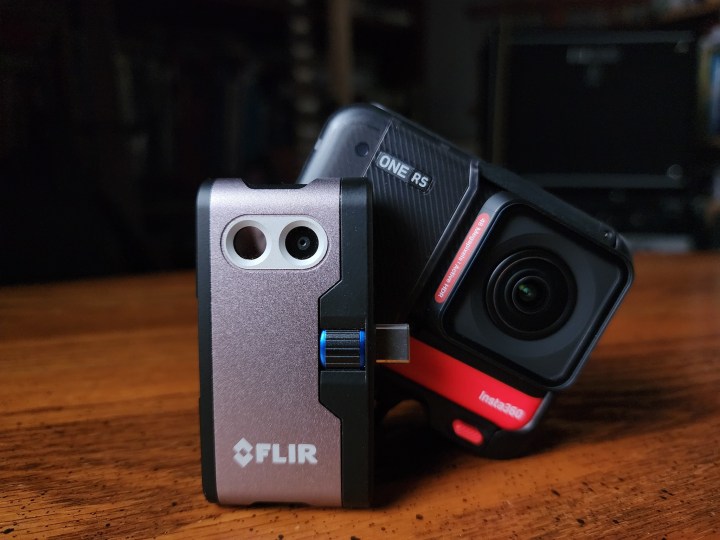
All Insta360 really needs to do is continue improving its existing RS system. For the next generation of RS system modules, I’m looking for an evolutionary upgrade. The 4K boost module mainly needs an image quality upgrade, while the 360 module should be improved to offer similar performance to the new Insta360 X3 camera. The 4K boost module needs to be upgraded to shoot 4K video at 120 frames per second (fps) because, currently, the system’s slow-motion capabilities are somewhat lacking. Audio capture of the RS system also needs to be upgraded to keep up with the competition.
The 1-inch Leica action camera module would also be great with just a simple evolutionary upgrade, but I suggest Insta360 think big and create a Micro 4/3 size sensor module for the RS system. The 1-inch 360 module is a recent release from Insta360, so I wouldn’t expect a new upgrade to that until 2024, but I hope by then it will make the jump to 8K video capture.
In further flights of fancy, I would like to see some new and unique modules to expand the RS system. How about a partnership between Insta360 and FLIR to produce a thermal camera module?
The future is promising

It’s truly exciting to witness the fierce competition going on between the action camera titans of the modern day. Such competition is healthy for driving innovation, and it’s great for the enthusiastic community that captures the most adrenaline-packed moments of their lives with these rugged little cameras.
I am eager to see what’s in store for the next generation of action cameras. I love to vividly imagine the future of action camera technology, and hope that the talented engineers of GoPro, DJI, and Insta360 will one day make such dreams a reality.


